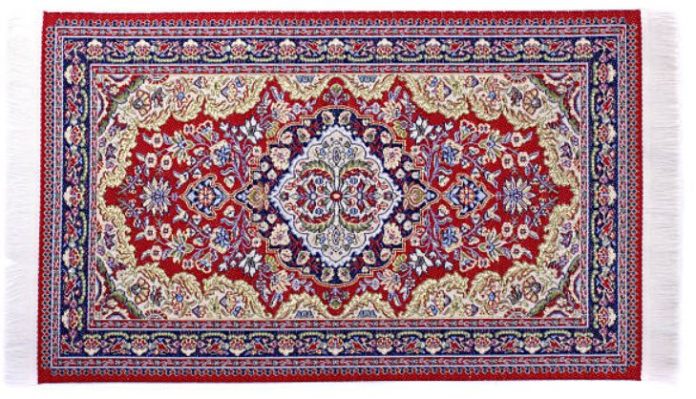Oriental rugs are true pieces of art
One way to learn to appreciate oriental rugs to their fullest is to study the designs and use them to build your own oriental-style rug.
Many of the design elements have significance, and it is known that in some regions it is believed that no rug can be perfect as “Only God is perfect”.
We can have our own values and ideas, but the thought behind this is profound. Although we always strive for perfection, we know that all too easily mistakes may be made.
Once we know this, we will not fault others for their mistakes and recognize that in our best works there will still be imperfections.
In oriental rugs the color shading may be variable as die lots change. So rather than planning a rug with all colors in ample supply, one may choose to vary the die lots and get that extra richness that comes from slight differences in shading, which adds to the luminosity and color interest.
Start by taking some graph paper and copying smaller and larger designs from a rug. It is best to start by building the border as it allows one to take several small designs and study the variations of each design and how they are fitted together in a pattern.
Oriental rugs may have several borders, some narrow and others broader. The designs within these borders are sometimes similar, but often a new element is introduced in each border.
Oriental rugs often use medallions grouped in a pattern against a different background, sometimes contrasting in color, at other times in a complementary color.
If you are interested in this craft, try to determine what kind of oriental rugs you find most appealing and research the country of origin, the design elements and the color combinations.
The wool used in the original carpets often consisted of camel hair, but excellent results may be obtained by using sheeps wool. Wool from New Zealand and Australia is often used for this purpose. They are being manufactured in beautiful rich colors.
This type of rug can be woven, but can also be made using special canvass that determines the number of knots per inch.
The finer the wool is, the finer the canvas should be, resulting in greater the number of knots per inch and usually a shorter pile.
When making a rug on canvas, one makes rows of loops of equal length. When the rug is finished, all the loops are cut and a beautiful rich pile reveals itself.
This makes a great difference in the color as the pile reflects light differently. There is some skill involved in creating loops of equal length, but this is fairly quickly learned.
One would start by measuring each loops, but eventually the eye is sufficient, and one can just check from time to time to ensure the length is still uniform.
It would be advisable to undertake a small rug as a first project, or to start with a fairly coarse pattern on a coarse canvas.
However, the real beauty of an oriental rug is in the fineness of its design and the closeness of the knots.

